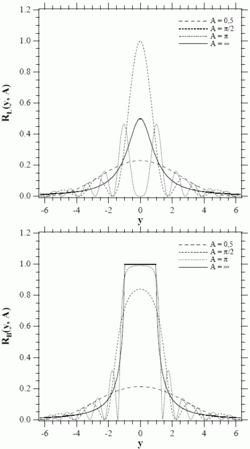
The dynamical theory of diffraction describes the interaction of waves with a regular lattice. The wave fields traditionally described are X-rays, neutrons or electrons and the regular lattice are atomic crystal structures or nanometer-scale multi-layers or self-arranged systems. In a wider sense, similar treatment is related to the interaction of light with optical band-gap materials or related wave problems in acoustics. The sections below deal with dynamical diffraction of X-rays.

The dynamical theory of diffraction considers the wave field in the periodic potential of the crystal and takes into account all multiple scattering effects. Unlike the kinematic theory of diffraction which describes the approximate position of Bragg or Laue diffraction peaks in reciprocal space, dynamical theory corrects for refraction, shape and width of the peaks, extinction and interference effects. Graphical representations are described in dispersion surfaces around reciprocal lattice points which fulfill the boundary conditions at the crystal interface.